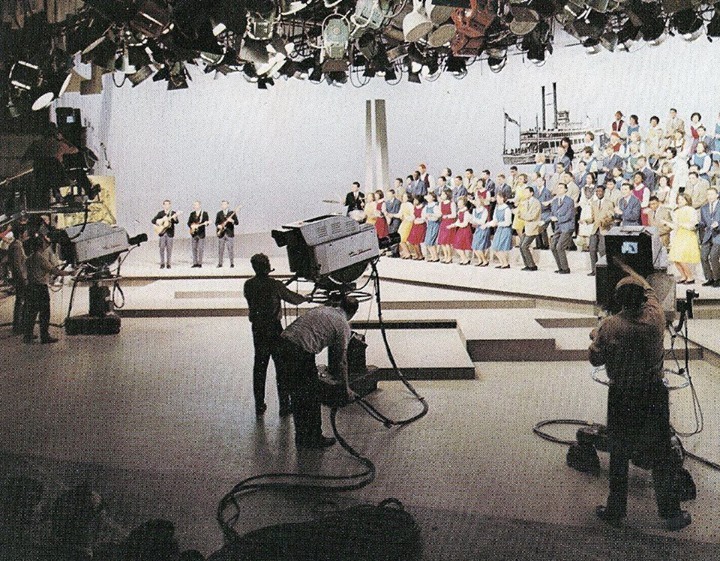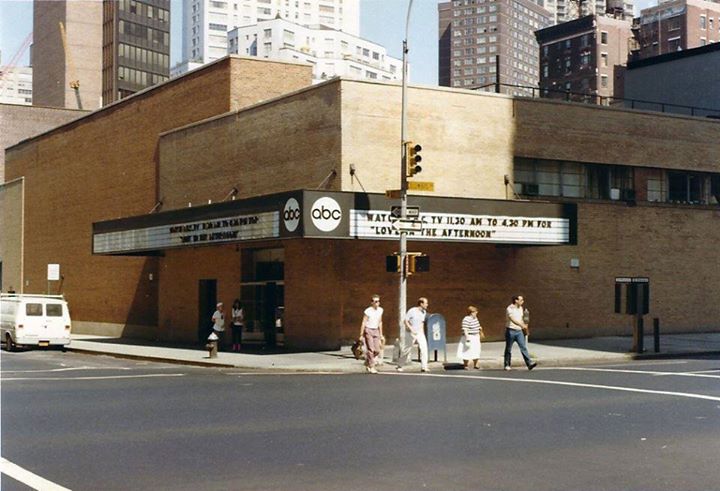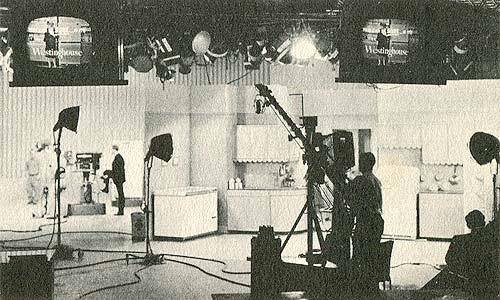

The History Of The Ampex Owned…Video Tape Center, Part 3 of 3
The History Of The Ampex Owned…Video Tape Center, Part 3 of 3
America’s First Commercial Television Production Facility
A few years ago, our friend Tom Coughlin traveled to Minnesota to comb the 3M archives as part of his ongoing research into the history of America’s first, and most innovative commercial tele production facility. Tom is a professor or journalism, but his deep interest here is also personal as his dad was a longtime staff member at Videotape Center as well. This is the final chapter of three fascinating installments. -Bobby Ellerbee
______________________________________________________
In order to free up space on the loading dock (which also doubled as a parking spot for the remote truck) between January and April 1967, the TK-41c cameras were taken off the truck and installed temporarily at Videotape Center while the Norelco cameras were being installed. Studio A had three Norelcos running in April, and Studio B’s cameras arrived in May. By May 15, 1967, the RCAs were back on the truck and ready for sale to ABC–despite M-G-M not actually owning, but only leasing the contained equipment, and having to make monthly payments to RCA through to 1969.
The minutes of the board meetings from the 1965-1967 time period provide an interesting snapshot of the independent video production industry at the time. Reeves was heavily promoting their video pod production system to advertising agencies and film production houses for one-off TV shoots on video. According to a report from Engineering Director Don Collins to the board (meeting minutes from July 1966), while NBC and ABC owned remote trucks, CBS did not. Reeves Sound Services owned six Ampex 2000 (color, high-band) videotape recorders and two plumbicon cameras with three more on order. Reeves used Norelco cameras that were impeccably maintained, but the remotely recorded video frequently had dropouts and poor signal quality, also there were complaints of communication problems between the set and the tape room. For much of second half of 1966 while Videotape Center was upgrading the tape room, they had no high-band recording or color tape editing capability and used Reeves’ video services extensively.
Other competitors included Tele-tape, which had leased the Little Theater to produce the Merv Griffin Show for Group W, and was in the process of leasing a former CBS studio at 81st St. and Broadway. Tele-tape was based in Chicago, and had recently taken over Jam Handy (an industrial film production company), a merger that was more expensive and less lucrative than they had anticipated. They had 90 people working in New York, 17 in Chicago, owned seven videotape machines and had six more on order. Lewron, a Baltimore-based company, had purchased a building in New York City and was slowly building it out as a TV studio. On the West Coast (Videotape Center had a Los Angeles office and was ready to send the Leo truck to the coast if work calls came) Technicolor had a two camera video truck.
The engineering department had taken over the operation of Telestudios “TVola” editing system which was offered to the public in 1966, which offered offline editing using a 16mm film kinescope with videotape timecoding applied.
Clients from the 1965-67 time frame include: ABC, who leased Studio C to shoot the soap opera, “The Nurses”, and had rented studio space for “Campy’s Place” and the “Jimmy Dean Show”.
During the 1966-1967 television season, Videotape Center’s tape room edited and duplicated “Password” for syndication (the show was produced at CBS in Hollywood). Thirty to forty percent of the tape room’s post-production work was being shot elsewhere. TV specials produced at Videotape during that time period include “St. Joan” (a Hallmark Hall of Fame production that aired on NBC), “An Enemy of the People” (an NET Playhouse production for public television), and “A Case of Libel” a TV production of a popular Broadway show, produced by David Susskind that aired on ABC. For TV commercial work, Videotape employed two staff directors, Hal Stone, and Adrian Riso, and commercials produced during that time period included spots for S&H Green Stamps, National Airlines, Gillette, Arnold Bread, Tang, Stridex, Goodyear Tire, Dutch Masters Cigars, Johnson and Johnson Petroleum Jelly, Papermaid Products, and Xerox.
Equipment purchases during this timeframe include an Ampex VR-3000 (compact 2” videotape recorder) for use on the Leo truck during times when the videotape truck was leased to a different client. In June 1967, they purchased a HS-100 disc recorder to do slow motion and freeze frames in the tape room. Also the last remaining RCA TK-60 black and white camera, which was being used for slates, countdowns and superimpositions, was replaced with an Ampex BC-300.
In March 1967, ABC’s cancellation of “The Nurses” precipitated a cash flow crisis, and the management decided to close Studio C indefinitely, and look into the possibility of renting the space out to Fordham and Columbia University, who at the time wanted to move into the Lincoln Center neighborhood.
3-M’s board designee John B. Lanigan motioned in 1967 that the board of directors should give RKO the three-year advance notification that was required in their lease of W. 67th St. in order to shut down Videotape Center. He cited a number of reasons—the mission of the company (to popularize the use of video tape for TV commercial production) had largely been fulfilled; Videotape Center was consistently being outbid by other companies (Tele-tape and Reeves, principally), and had higher expenses than it’s competitors.
Also cited–the cultural differences between the 3-M and M-G-M directors, and what they considered acceptable business practices.
To run-out the final three years of the RKO studio lease as well as to liquidate the equipment assets, Lanigan negotiated with Avertel, a Toronto-based video tape house run by Ormand Collier, and Reeves Sound Services, who had offered $5 million to take over the business. Also Western Video Industries, a production studio based in a former NBC studio at Hollywood and Vine in Los Angeles (that coincidentally owned three stages and a remote truck) had also expressed interest in Videotape Center. The final proposed sale agreement was negotiated in the later part of 1968, with Avertel and Reeves both counter offering and bidding against each other. On November 11, 1968, Harold Reeves announced that Reeves agreed to purchase all the outstanding Videotape Productions stock from MGM and 3-M for an undisclosed price. With the deal, Reeves had acquired two television studios worth of production equipment, and a lease on a building that would run out in Summer 1970.
It appears that the Leo remote truck, at the time on lease to ABC, was not included in the deal, and in March 1968 both M-G-M and 3-M were contacted by RCA who expressed concern that the sale of Videotape Center would create a situation of increased possibility of default on the lease payments. Lanigan’s response to the situation was to alert the M-G-M directors of RCA’s concerns, and subsequently contact RCA and ask for their assistance in selling the equipment (presumably to ABC). Under Reeves ownership, the facility continued to operate, doing business both as Videotape Center, and Reeves Lincoln Square Studios. In April, 1970, Broadcasting Magazine (p 104) announced that ABC was negotiating to purchase the Reeves facility at 101 West 67th St. for approximately $3 million in cash. According to the article, the sale included a substantial part of the equipment that was installed there, and the deal was expected to close during the month subject to the approval of the ABC board of directors. Over the summer of 1970, the ABC signs went up on the building—from then on the facility was known as TV-18/19.
Shown here, the VTC TK41s shooting an “Up With People” special, the 67th Street property as ABC’s TV 18/19 and a Westinghouse commercial shoot with Betty Ferness.

